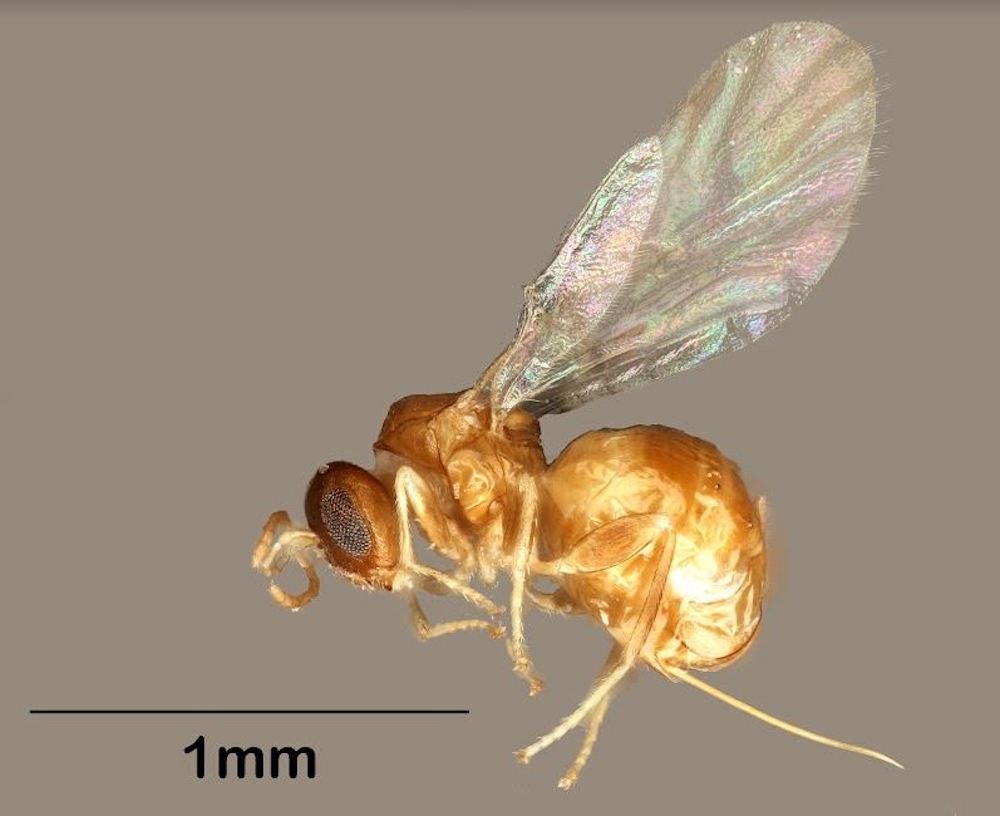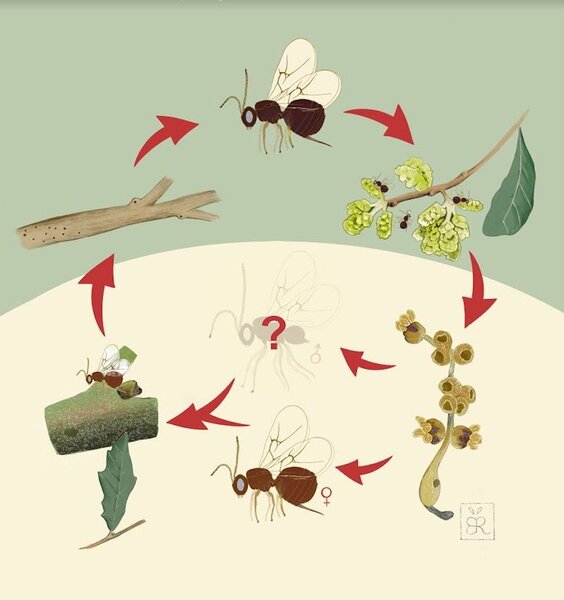Create a free profile to get unlimited access to exclusive videos, sweepstakes, and more!
2 millimeter Valhalla wasp is the smallest of its kind, no Pym particles needed
We think this little guy is worthy to wield Mjolnir.

New species are discovered all the time, an average of dozens every day. Many of them are hidden in untrodden locales like deep forests or oceans where we’re unlikely to encounter them. What’s a little more unusual is finding something new in the midst of civilization, practically right beneath our noses. Accomplishing that requires knowing what to look for, a little luck, and collaboration.
That’s what happened, though, when a graduate student at Rice University took a targeted look at some oak trees around campus. Dr. Scott Egan is a professor at Rice, where he runs a lab focused specifically on gall wasps. These peculiar insects maintain close relationships with plants, using them to construct nests to house and grow their eggs.
The types of wasps Egan is most interested are a subset who live out their lives on and around live oak trees, many of which pepper the Rice campus, as well as much of the Gulf of Mexico. The recently discovered species known as Neuroterus Valhalla, is the smallest of these, measuring in at barely 2 millimeters from head to wingtip. Egan, along with graduate student Pedro Brandão-Diaz who was lead author on the study, and collaborators in other parts of the world, published a description of the new species in the journal Systematic Entomology.
“They’re amazing because they lay their eggs onto the oak tree and manipulate the stem cells to grow a tumor-like structure within which the baby wasps grow,” Egan told SYFY WIRE.
N. Valhalla takes its name from the graduate student pub in the basement of the biology and chemistry building on the Rice campus. Brandão first encountered the species while examining trees outside the pub when he noticed small holes in the tree. Later, he was sampling insects from the flowers of those same oak trees for genetic sequencing. The genetic data revealed an unknown lineage which turned out to be N. Valhalla. That data was confirmed by collaborators at the University of Iowa. Egan credits the specialization of the lab and Brandão’s singular focus for putting him in the right place at the right time to hit upon the species at both ends of its life cycle.
Gall wasps tend to have two alternating generations which hatch roughly six months apart. The Valhalla wasp, however, does something even more unusual. While it has two alternating generations, each of them lives significantly different lives, largely dependent on where they lay their eggs.
The first creates a gall on catkins, the pollen-bearing tassels of newly formed flower buds. Those catkins only last for a few weeks out of the year. As a result, the eggs need to form the gall, hatch, and grow into an adult all during that brief window. All told, the whole process takes place over the course of a few weeks or a month.
At that point they’re presented with a challenge, their adult lifespans are short, and they don’t have the luxury of waiting a year for the next round of catkins to form a year later. Instead, the second generation lays their eggs on the stems of the tree where they form a gall on entirely different tissue, through mechanisms which are as yet not totally understood.
“They need to lay their eggs and the eggs have to stay for the next 11 months until the catkins come out. It’s almost the reverse restriction. One of the generations is so restricted to this ephemeral tissue that they need to find something a little hardier,” Egan said.
The lab is now focused on studying the plant-wasp relationship from the perspective of the plants. They’re looking at the tree’s transcriptome — which genes are active or inactive — to get an idea of how gall wasps manipulate their tissues to form galls for their eggs.
The Valhalla wasp may be small, but it’s a powerful reminder of the rich biodiversity which exists all around us if we know where to look.



























